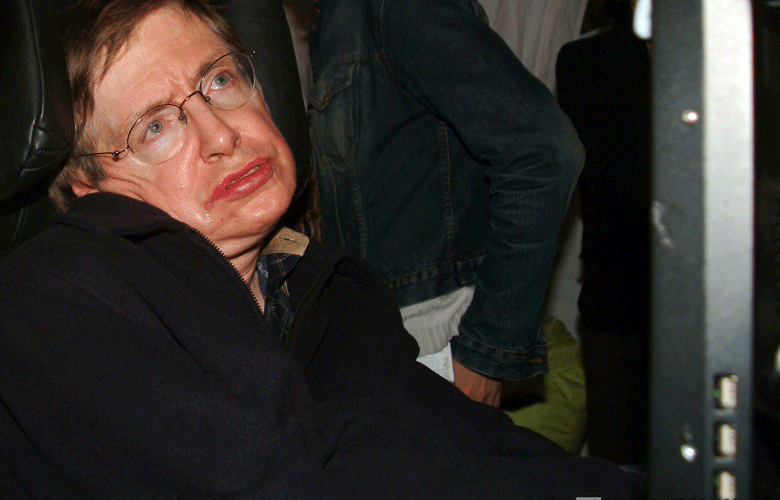Written by : Arghya Manna
Are we conscious of our being? Though neuroscientists, philosophers and neuro-philosophers have debated over the topics for decades, the answer has not come. Who thenunderstood consciousness? Virginia Woolf was someone who did. She was one of the most important English writers of the twentieth century, who had exploited consciousness in her narratives. According to Woolf, consciousness— simultaneously establishes and questions our being—is the accumulation of our scattered thoughts. She noted in her diary that when she looked inside herself, what she found was consciousness never stood still, rather it was a turbulent current. Woolf explained that our thought process is dynamic, it has trajectories. But what if we look into our consciousness? How is our being made? The answer we shall find is that Woolf was absolutely right. One can imagine consciousness or sense of being as gathered as quanta of thoughts or thought-packets made by our acquired experience throughout our lifetime. If we look deeper it can be found that the dynamic flow of such thought packets has many directions, which means multiple trajectories. Sometimes, it flows in real time, which defines our current being denoting the space and the time we inhabit. But sometimes our thought packets could flowthrough imaginary experiences like to Pharaonic Egypt in which we see ourselves as a Pharaoh or to the future where we are discussing the complex theory of topology with Field Medal winners at Wheeler Lab, MIT. This indicates that trajectories of our thought packets can avoid our current being and can head to multiple dimensions. Now, the question is whether these trajectories exist at all? Of course, they do. Otherwise, we could not think about it. We can visualize the experiences with closed eyes or even with open eyes. But if they exist, what is their actual space and time? In that case, any other observer can contradict us and say, “Do not be so ambitious! You are living in 2018. Today’s date according to the calendar is such and such”. If I take my own case one can tell me “you are in India now, it’s summer there. It is your time, current time… only this it is real and you are only conscious of what is real.” How can I argue with them? How can I convince them that sometimes I become a three thousand years old Pharaoh and sometimes a Mathematical genius of 2050?
Stephen Hawking had the tool to convince the skeptics. He had a tool named “Imaginary Time”. The common notion in Physics is in real time universe had started from a single point after ‘Big Bang’. Time began at that point and since then time has been flowing in a linear fashion, forward; just as a particle of light or photon reach observers’ eye travelling in a straight line from a light source. But Hawking challenged this common perception. He said that out of the profusion of universes born after the Big Bang, most faded away without leaving any distinct imprint on the universe that exists today. Only a tiny fraction of them blended to form the current state of the universe. Thomas Hertog of the European Laboratory for Particle Physics at CERN supported Hawking’s theory. Hertog and Hawking boldly claim that the current universe is actually the summation of its multiple histories but only one is perceived by us.Two elusive areas about the Big Bang theory helped Hawking to bring “Imaginary Time” theory. First, before that single point was there any existence of time? Second, where does time end? In “Imaginary Time”, there is no start and no end of time. The scientist duo took help from Richard Feynman’s groundbreaking particle theory. In the 1960s, Feynman, to explain the bizarre behaviour of photon particle proposed that when a particle like a photon travels through a linear path the straight line trajectory dominates the indirect trajectories. But the particle actually has multiple trajectory histories. The observer thinks that only the linear path is real.
Sounds similar to Woolf’s explanation about how our mind works? The alternative history of particles, proposed by Feynman and later adapted by Hawking and others is quite similar to the flow of our mind. If we free our mind and let it travel, our thought packets-just like particles or scattered fractions of withered universe-will start to flow based on various chapters of our memory. The mind travels and opens various chapters of our memory. The thought packets can travel to the past or to the future. They can imagine weird things and sometime look between some warped passages. In fact,the mind shoots out from the current state to another state and back again. In between, it creates some visuals about different possibilities. We only think that our being is true and the paths travelled by our minds which can be at Egypt sometimes or future minds travels are only imaginary. But according to imaginary time those are just other possibilities whose chance to be established in the long term is low. Hence, our current being or current consciousness is the summation of all alternative histories of our multiple possible histories. In those histories, we could inhabit pharaonic Egypt or anywhere in the future.
Though the flow of mind and consciousness can be explained through Hawking’s ground-breaking theory, did Hawking think about in that way himself? After all, he was a theoretical physicist, not a neuroscientist. In 1990 in a lecture series organized by the Sigma Club at Cambridge, Hawking explained his thinking about the human mind. In that particular lecture, Hawking advocated freedom of mind and questioned whether a murderer with the mental disability should be punished or not. Hawking clearly stated that according to “Imaginary Time” concept and Feynman’s theory of alternative history, the existence of alternative mind state is possible. A person commits heinous crimes such as murder because his flow of mind, thinking, experience, memory is based on alternative history, which appears insane to an observer in another alternative time. What is unexpected and unaccepted in our real world can be real in a parallel world.
Like a true genius, Hawking believed in infinite possibilities of the human mind as did Shakespeare:
“I could be bounded in a nutshell and count myself a king of infinite space”
Hamlet (Act II, Scene II).
-William Shakespeare
In fact, Hawking had used this quote in his bestselling book “The Universe In A Nutshell”.




